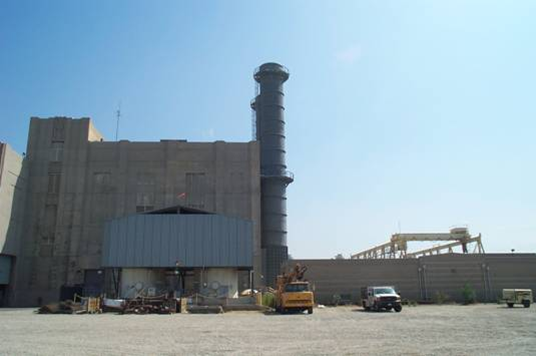|
The CARB project
resulted in a model to examine the impact of
ground-level sources at
source-receptor distances of the order of a few kilometers
settings. Tracer experiment was conducted in
Wilmington, CA 2004.
And the CEC project was
to formulate and evaluate a short-range dispersion model
applicable to elevated sources
in urban areas. Tracer
experiment was conducted in Wilmington, CA
2005. |
| |
Wilmington Surroundings
 |
|
LADWP Power Plant
 |
|
|

Locations of Samplers for Wilmington
2004 Study |
|
|
 |
|
| |
Mean arc maximum
observed
concentrations decrease at a slower rate than x-2
after a distance of about 1000m from the source for Wilmington 2004 Study
|
|
|

| |
|
For behind power plant
release,
model performance is better when initial vertical
plume
spread is involved and boundary layer height is limited |
|

|
|
| |
|
For release in open area,
model performance improves when boundary layer height is
limited but vertical spread is not corrected for initial
spread |
|

|
| |
|

Locations of Samplers for Wilmington
2005 Study |
| |
|
|
| |
The dispersion model used to
interpret
Wilmington 2005 data is based on the entrainment
of plume by growing internal boundary layer |
|
|

|
|
|
| |
Comparison of measured arc maximum
concentrations with model results for
buoyant (left) and non-buoyant
(right) releases for Wilmington 2005 |
|
|

|

|
|
|
|
|
|
|
| |
Comparison of measured arc maximum
concentrations with model results for
buoyant (left) and non-buoyant
(right) releases for Wilmington 2005. The
meteorological inputs are estimated
using modified AERMOD interface |
|
|

|
 |
|
|
|
|
Related Publications
Yuan,
J., Venkatram, A., and Isakov, V., 2006:
Dispersion from ground-level sources in a shoreline urban area.
Atmospheric Environment, 40(7), 1361-1372
A
dispersion model for elevated sources in shoreline urban areas. To
be submitted to Atmospheric Environment
Home
Research
People
Facilities
Experiments
Publications















